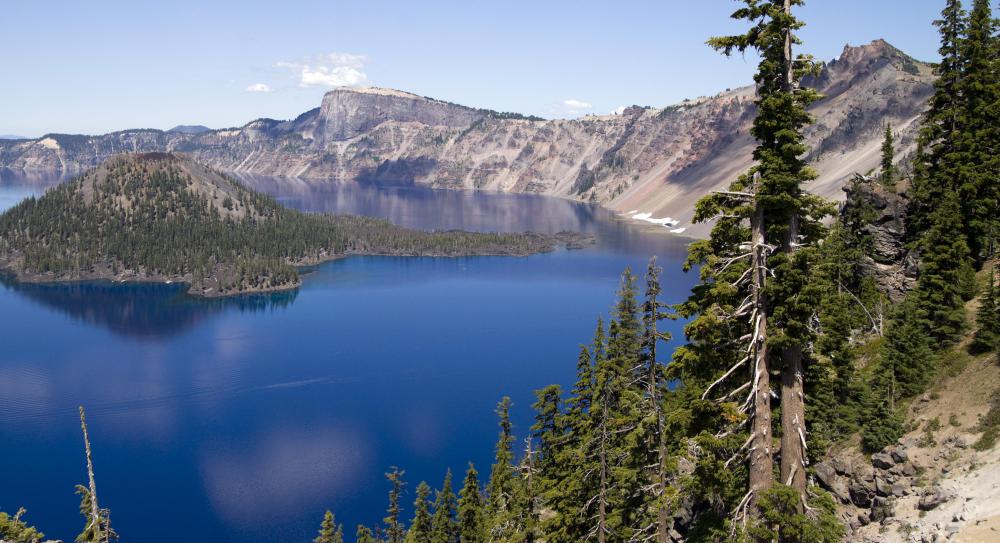What is a Caldera?
 Mary McMahon
Mary McMahon
A caldera is a volcanic structure that is caused by the collapse of the ground around a volcano. At first glance, it often looks a great deal like a volcanic crater, but the process of its formation is different from that of traditional craters, which is why a distinction is made between the two. One of the most famous calderas in the world lies beneath Crater Lake, a stunning volcanic lake in the United States. The Greek island of Santorini also boasts a notable one that forms a natural harbor.
These structures are usually associated with stratovolcanoes and basaltic shield volcanoes. They can form in several different ways. In many cases, a volcanic eruption empties magma chambers beneath the volcano, and these chambers collapse, creating a deep depression in the ground. In other instances, the caldera is created through a gradual process of subsidence triggered by slowly weakened ground. In the case of erosion calderas, the formation is caused by the weather in the region.

The largest type are known as resurgent calderas. This is caused by the widespread collapse of magma chambers that are not associated with a particular volcano or point of eruption, and they are the largest volcanic structures on Earth. The level of volcanic activity needed to produce a resurgent caldera is quite sizable, and would cause a great deal of damage.

Some vulcanologists prefer “volcanic collapse crater” to “caldera,” while others refer to these structures as “cauldrons.” In fact, the term comes from the Latin word for “cauldron,” reflecting the shape of a classical caldera, so both terms are entirely appropriate. Superficially, it can be difficult to tell the difference between a caldera and a crater, especially in the case of a dormant volcano. The key thing to know about craters is that they occur around volcanic vents, which makes standing in one a much more perilous proposition.

Some calderas are so large that they cannot be identified from the ground, because people do not realize that they are walking or living in them. In these instances, satellite photographs revealed the existence of the caldera, much to the surprise of people who had settled in these regions. Others on the ocean floor have been identified with sonar technology which has been used to determine the depth of the ocean for the purpose of making relief maps.
AS FEATURED ON:
AS FEATURED ON:














Discussion Comments
@anon89310: Then look it up in a dictionary! This article was extremely helpful, and i recommend it to anyone!
I think this is too long, i just want a simple definition. i am 12 and my final is tomorrow. i don't have time to read all this!
@Glashouse - The Yellowstone Caldera actually engulfs most of Yellowstone National Park. The caldera is some 40 or so miles across, and it has been swelling in recent years. The caldera actually sits above a magma chamber that supplies the Yellowstone Super Volcano. Scientists speculate that this chamber has been filling with magma again (no need to panic though, because calderas often go through normal cycles of swelling). So to answer your question, calderas can be found on active, inactive, and dormant volcanoes. As for whether or not Yellowstone is still active, I would have to say it is dormant. A volcano this size does not erupt as frequently as smaller volcanoes, but there has been seismic and geothermal activity at Yellowstone for some time. The last minor eruption at Yellowstone occurred well over 50,000 years ago. The last major eruption, the one that formed the Yellowstone Caldera, took place over 600,000 years ago.
If a volcanic crater is a more dangerous place to be than a caldera, does that mean that calderas form when volcanoes become inactive? I live in Wyoming and I always hear people referencing the Yellowstone Caldera. I went to the park a few years back, but I never knew there was a volcano there. I was wondering where this volcano is, and if it is still active?
Post your comments